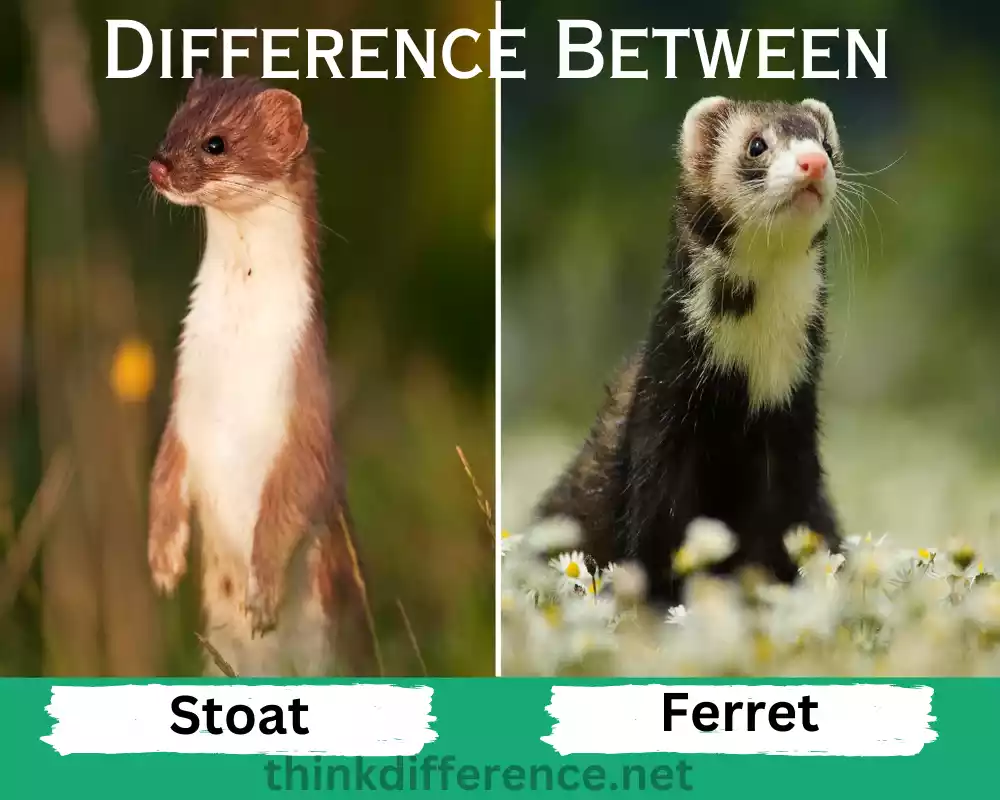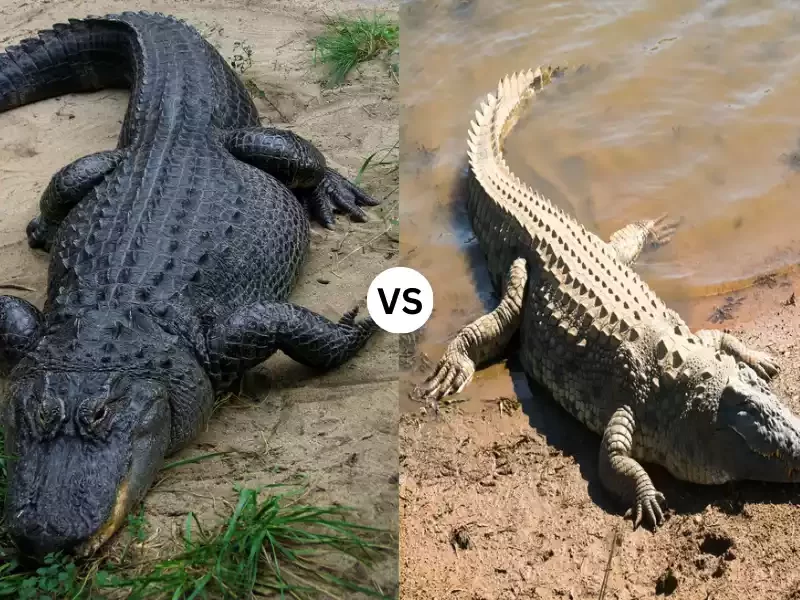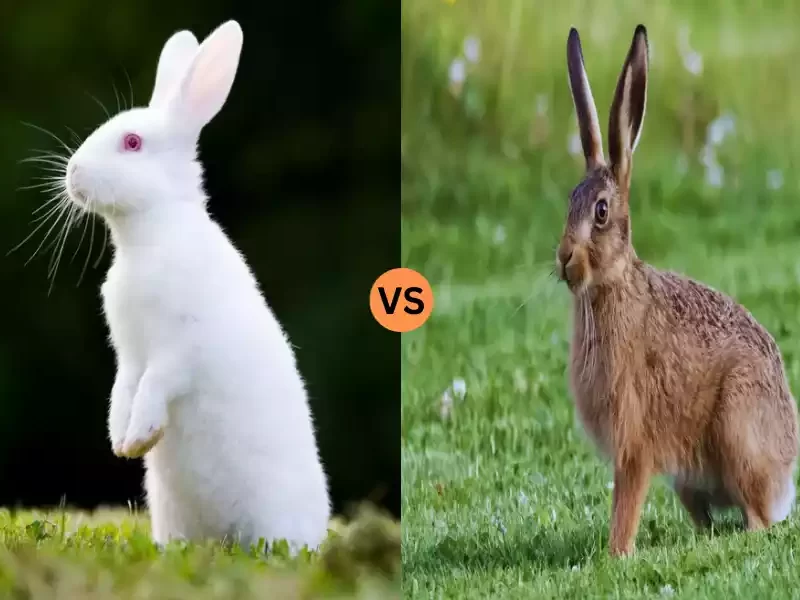Ferrets and stoats, two members of the Mustelidae family, may initially appear similar. There are numerous distinctions that differentiate the two species. Here we’ll look at their individual characteristics, behaviors and functions as well as explore keeping one as pets.
Definition of Stoat and Ferret
Stoat: Stoat is a carnivorous mammal belonging to Mustelidae family of mammals. More commonly referred to as an Ermine or Short-tailed Weasel, its characteristics include long and flexible neck with short legs; an elongated body. Short legs an autumnal brown coat in wintertime (except the tip of their tail is black) speed, agility and hunting abilities make stoats highly sought-after animals in numerous ecosystems including Europe Asia North America.
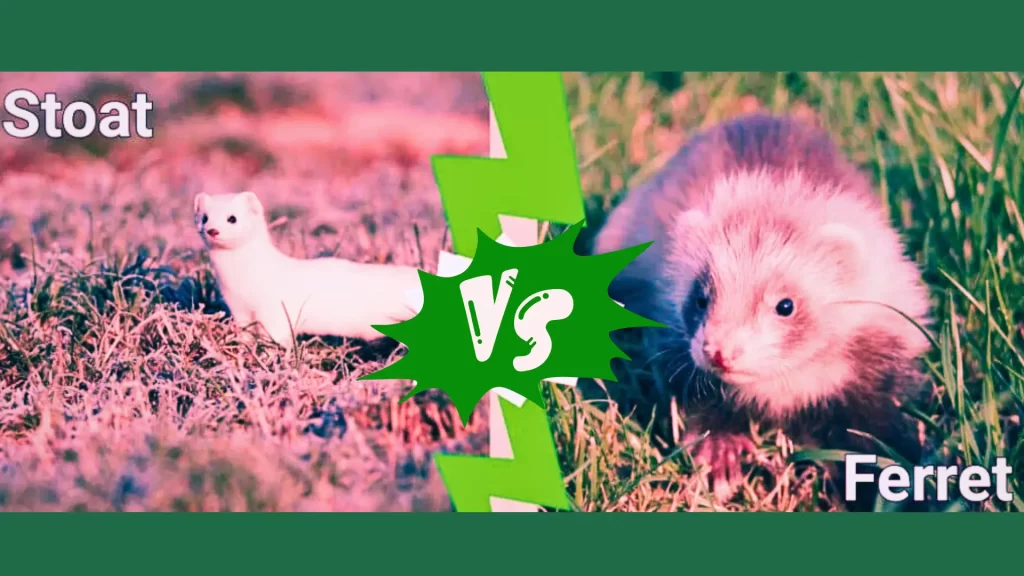
Ferret: A ferret is a domesticated subspecies of the European polecat (Mustela putorius). Domestic ferrets have been bred for thousands of years for various purposes, including companionship, hunting small game and pest control. Ferrets have long been recognized for their slim bodies with long tapered tails. Their coats come in different shades such as silver, albino or sable depending on which species is desired. Ferrets are social animals who are known for being playful yet intelligent companions and work animals around the globe.
Importance of understanding the differences between Stoat and Ferret
Understanding the differences between stoats and ferrets is important for several reasons:
- Conservation: Both stoats and ferrets may face conservation challenges but the nature of these challenges can differ. Understanding their distinct characteristics and ecological roles helps in developing effective conservation strategies specific to each species. It allows conservationists to address the threats and implement targeted conservation measures to ensure the long-term survival of these animals and their respective populations.
- Responsible Pet Ownership: Being that ferrets are popular as pets, knowing the differences between ferrets and stoats will assist potential owners with making more informed choices about which pet best meets their lifestyle and needs. It helps individuals understand the specific needs, behaviors and care requirements of each species, promoting responsible pet ownership and ensuring the well-being of the animal.
- Ecological Impact: Stoats and ferrets can have different ecological impacts due to variations in their behavior, hunting patterns and interactions with prey species. Knowledge is power when it comes to understanding their roles within ecosystems – particularly regarding regulation of prey species populations or stopping invasion of foreign ones.
- Research and Study: Stoats and ferrets are subjects of scientific research in various fields, including ecology, behavior, genetics and conservation biology. Accurate identification and understanding of their differences are essential for conducting research, analyzing data and drawing meaningful conclusions. It allows researchers to investigate specific traits or behaviors unique to each species and explore their ecological interactions and evolutionary history.
- Public Awareness and Education: Educating the public about stoats and ferrets helps dispel misconceptions, promote understanding and foster appreciation for these animals. It encourages responsible interactions with both species, whether in the wild or as pets and promotes conservation efforts to protect their natural habitats and populations.
Understanding the differences between ferrets and stoats allows us to appreciate their individualities, make informed decisions regarding conservation and care needs, promote wellbeing and ensure long-term viability for these species.
Physical Characteristics
Physical Characteristics of Stoats:
- Size: Stoats are small mammals, measuring around 7 to 13 inches (18 to 33 cm) in length, excluding the tail.
- Body Shape: They have a long, slender body with a cylindrical shape, designed for agility and maneuverability.
- Legs: Stoats have short legs in proportion to their body size, which helps them navigate various terrains, including burrows and dense vegetation.
- Head: They have a small, triangular-shaped head with a pointed snout and prominent black eyes.
- Ears: Stoats possess small, rounded ears that are well-adapted for keen hearing.
- Tail: Their tail is relatively short compared to their body length, measuring around 2 to 4 inches (5 to 10 cm). It may serve as a balancing organ during leaps and climbs.
- Fur Coloration: Stoats exhibit a distinct seasonal color change. In summer, their fur is chestnut-brown on the upper parts and creamy white on the belly. In winter, their fur becomes mostly white, except for the tip of the tail, which remains black.
- Coat Thickness: Stoats have a dense, insulating fur that helps them withstand cold temperatures, especially during winter.
- Weight: Adult stoats typically weigh between 7 and 12 ounces (200 to 340 grams), with males generally larger and heavier than females.
Physical Characteristics of Ferrets:
- Size: Ferrets are slightly larger than stoats, measuring around 14 to 20 inches (36 to 51 cm) in length, excluding the tail.
- Body Shape: They have a long, slim body with a similar cylindrical shape to stoats, facilitating agility and flexibility.
- Legs: Ferrets, like stoats, have short legs relative to their body size, allowing them to maneuver through tight spaces.
- Head: Ferrets possess a small, wedge-shaped head with a tapered snout and prominent black eyes.
- Ears: Similar to stoats, ferrets have small, rounded ears that contribute to their acute hearing ability.
- Tail: Their tail is proportionally long compared to their body length, measuring around 5 to 8 inches (13 to 20 cm). It aids in balance and communication.
- Fur Coloration: Ferrets come in various fur colors, including albino (white with red eyes), sable (dark brown), cinnamon (reddish-brown) and patterns such as panda or roan.
- Coat Thickness: Ferrets have a dense and soft undercoat, covered by guard hairs that vary in length depending on the coloration.
- Weight: Adult ferrets generally weigh between 1.5 and 4 pounds (0.7 to 1.8 kg), with males being larger and heavier than females.
While stoats and ferrets share some similarities in their physical characteristics, such as their body shape and short legs, there are notable differences in their size, tail length and fur coloration. These distinctions contribute to their respective adaptations and roles in their natural habitats or domestic environments.
Natural Habitat and Distribution
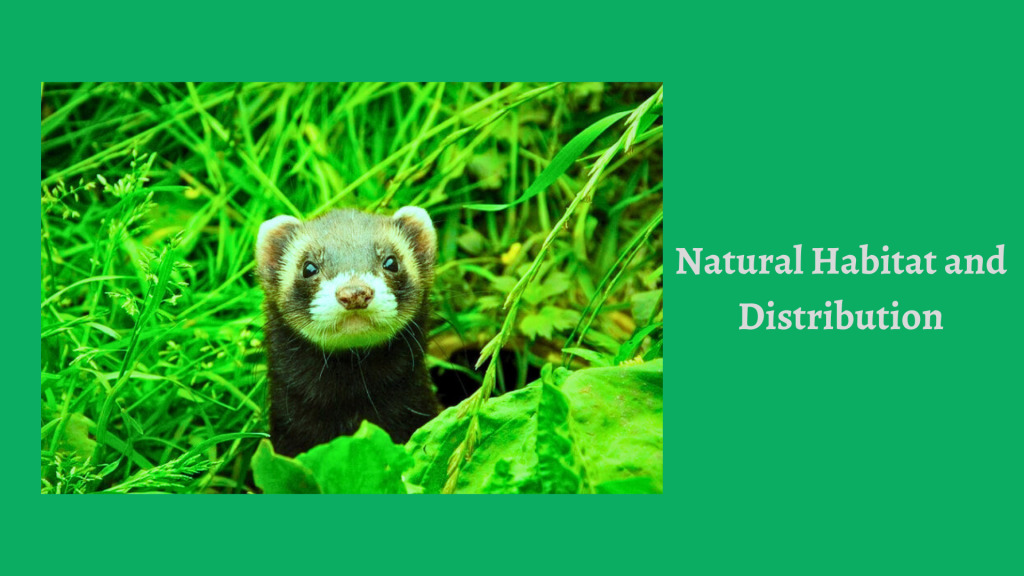
Natural Habitat and Distribution of Stoats:
Stoats can be found throughout North America, Europe and Asia and inhabit many different habitats including:
- Forests: Stoats inhabit both coniferous and deciduous forests, utilizing the dense vegetation for cover and hunting.
- Grasslands: They are adaptable and can be found in open grassy areas, where they hunt small mammals and birds.
- Tundra: Stoats are well-suited to cold environments and are found in tundra regions, such as the Arctic, where they undergo seasonal color changes to blend with the surroundings.
- Wetlands: They are known to inhabit wetland areas like marshes and swamps, where they can find ample prey and suitable dens for shelter.
The specific distribution of stoats depends on the region and subspecies. Stoats can be seen all across North America – in Canada, Alaska and parts of northern United States, whilst Europe boasts them throughout Scandinavia as well as Britain Isles and eastern regions of Europe. In Asia, stoats have a wide distribution across Siberia, China and Japan.
Natural Habitat and Distribution of Ferrets:
Ferrets are domesticated animals without wild distribution, their descendants may trace back to European polecats natives to both Europe and parts of Asia and Africa.
Domesticated species, ferrets can be found all around the world as pets or employed to complete specific tasks. Ferrets adapt well and thrive under many circumstances including:
- Human Dwellings: Ferrets are often kept as pets in households and residential areas, where they live indoors and have access to appropriate care and shelter.
- Farms and Rural Areas: Ferrets have historically been used for hunting small game, particularly rabbits, in agricultural and rural settings.
- Animal Control Programs: In some regions, ferrets are used for pest control purposes, such as controlling rodent populations on farms, warehouses or other locations.
Ferrets do not live in their natural environments in nature, their adaptability has allowed them to adapt well in human-created habitats where they receive proper care and can flourish comfortably.
Behavior and Social Structure
Behavior and Social Structure of Stoats:
Stoats (Mustela erminea) are primarily solitary animals, with minimal social interaction except during the breeding season. Here are some key aspects of their behavior and social structure:
- Solitary Nature: Stoats are known for their solitary lifestyle, spending most of their time hunting and foraging alone.
- Territoriality: They establish and defend territories, which can vary in size depending on the availability of prey and suitable dens.
- Hunting and Feeding Habits: Stoats are agile and voracious predators. Small mammals employ both their sense of smell and hearing to track down and catch birds and insects for food, using this sense to locate potential prey. They are skilled climbers and swimmers, enabling them to pursue prey in various habitats.
- Opportunistic Predators: Stoats are opportunistic hunters and will take advantage of any available food source, even if it is larger than themselves.
- Nesting and Denning: Stoats typically create dens for resting, birthing, and rearing young. They may use burrows, rock crevices or take over abandoned burrows of other animals.
- Communication: Stoats use various vocalizations, body postures and scent marking to communicate with other stoats and signal territorial boundaries.
- Breeding Season: Stoats are seasonal breeders, with mating occurring during the summer months. Male stoats may compete for access to females.
- Maternal Care: Female stoats, called jills, give birth to litters of 6 to 12 kits. The kits are born blind and helpless and the mother provides care and protection until they become independent.
Behavior and Social Structure of Ferrets:
Ferrets (Mustela putorius furo) are highly social animals and have a more varied social structure compared to stoats. Here are some key aspects of their behavior and social structure:
- Social Nature: Ferrets are known for their sociable and playful behavior. They enjoy the company of other ferrets and form social bonds with their human caretakers.
- Playfulness: Ferrets engage in various playful activities, including chasing, wrestling, and exploring their environment. They require mental and physical stimulation to stay happy and healthy.
- Burrowing and Tunneling: Ferrets have a natural inclination to dig and burrow. They may create tunnels or hide in enclosed spaces for play or rest.
- Scent Marking: Ferrets use scent marking, including rubbing their bodies against objects or spraying musky secretions, to communicate with other ferrets and mark their territory.
- Predatory Instincts: Ferrets have retained their predatory instincts from their wild ancestors. They may exhibit stalking behavior and chase small objects or prey-like toys.
- Reproductive Behavior: Female ferrets, called jills, can enter estrus or heat if not spayed. During this time, they may exhibit signs of restlessness and attract the attention of male ferrets, called hobs.
- Hierarchy and Play Fights: In multi-ferret households, a hierarchy or dominance order may form. Play fights or “war dances” can occur between ferrets to establish dominance or settle disputes. These interactions are typically non-aggressive and part of their natural social behavior.
Ferrets, with their social and playful nature, require regular social interaction, environmental enrichment and mental stimulation to thrive. Proper socialization and care are essential to ensure their well-being and happiness as domesticated pets.
Reproduction and Life Cycle
Reproduction and life cycle differ between stoats and ferrets. Here’s a summary of their reproductive behaviors and life cycles:
Stoats:
- Breeding Season: Stoats are seasonal breeders, with their mating season typically occurring in the summer months.
- Mating and Gestation: During the breeding season, male stoats compete for access to females. After mating, the female stoat undergoes a gestation period of approximately 280 to 340 days.
- Litters: Female stoats give birth to litters of kits, with the average litter size ranging from 5 to 12 kits, although larger litters have been recorded. The kits are born blind and helpless.
- Maternal Care: The female stoat provides maternal care to the kits, nursing them and keeping them warm in a nest within a burrow or secluded location. She protects and feeds them until they are old enough to venture out on their own.
- Development: Stoat kits start opening their eyes at around three weeks of age. They begin exploring their surroundings and learning hunting skills from their mother. By the age of eight to twelve weeks, they are usually weaned and independent.
- Sexual Maturity: Stoats reach sexual maturity at around ten months of age. Once mature, they are ready to breed and continue the reproductive cycle.
Ferrets:
- Breeding Season: Ferrets are capable of breeding throughout the year, although their reproductive activity may be influenced by environmental factors and the presence of artificial lighting.
- Estrus Cycle: Female ferrets experience a reproductive cycle known as estrus or heat. Estrus typically lasts for several days and occurs every two to three weeks, provided the female is not bred or spayed.
- Mating and Gestation: Ferrets are induced ovulators, which means that mating triggers ovulation. After successful mating, female ferrets typically go into gestation between 42 and 45 days later.
- Litters: Ferrets give birth to litters of kits, with the average litter size ranging from 3 to 12 kits. Larger litters have also been recorded. Like stoats, ferret kits are born blind and dependent on their mother for care.
- Maternal Care: The female ferret provides maternal care to her kits, nursing them and keeping them warm in a nest or enclosure. She helps them develop and teaches them basic skills until they are old enough to be weaned.
- Development: Ferret kits start opening their eyes at around three to four weeks of age. They begin exploring their surroundings and learning from their mother and littermates. From 6-8 weeks on, they should begin being weaned off their formula diet and ready to return home.
- Sexual Maturity: Ferrets reach sexual maturity between four to six months old. It is best to wait at least close to one year prior to breeding them.
Understanding the reproductive behaviors and lifecycles of ferrets and stoats are critical in running breeding programs while safeguarding animal wellbeing and making informed choices regarding care – such as spaying/neutering to avoid unnecessary litters.
Domestication and Use by Humans
Domestication and Use of Stoats:
Stoats (Mustela erminea) are primarily wild animals and have not been extensively domesticated or bred for specific purposes by humans. There are a few instances where stoats have been used or interacted with humans:
- Fur Trade: Historically, stoats have been hunted for their fur. The winter fur, which turns white, known as ermine, has been highly prized for its beauty and used in clothing, especially ceremonial robes.
- Pest Control: Stoats have been introduced into certain regions to control rodent and rabbit populations that damage ecosystems or crops, thus protecting these precious spaces from damage caused by rodents or rabbits. They are agile and efficient hunters, capable of reducing pest populations.
- Scientific Research: Stoats have been studied in scientific research to understand their behavior, ecology and natural history. This research contributes to broader knowledge about predator-prey dynamics and ecosystem dynamics.
Domestication and Use of Ferrets:
Ferrets (Mustela putorius furo) have a long history of domestication and have been bred for specific purposes by humans. Here are some notable uses and interactions of ferrets with humans:
- Companionship: Ferrets are commonly kept as pets and provide companionship to their owners. They have playful and sociable personalities, making them popular household pets for many people.
- Hunting: Ferrets have a natural instinct to hunt small game, particularly rabbits. They have been used in traditional hunting practices known as ferreting, where they are released into rabbit burrows to flush out and chase rabbits for human hunters.
- Pest Control: Ferrets have been employed for pest control purposes, particularly in agricultural settings. They are used to control populations of rodents on farms, barns or warehouses.
- Show and Exhibition: Some ferret enthusiasts participate in ferret shows and exhibitions, where ferrets are judged based on their appearance, behavior and agility in various competitions.
- Research and Testing: Ferrets have also been used in scientific research, particularly in medical and pharmaceutical studies. They have been utilized as models for studying respiratory diseases, including influenza and COVID-19.
- Working Animals: In some countries, ferrets are trained for specific working roles, such as sniffing out contraband or acting as assistance animals for individuals with disabilities.
It is important to note that the domestication and use of ferrets vary in different regions and cultures. Their adaptability, intelligence and specific hunting instincts have made them valuable and versatile animals in various human activities.
Differences between Stoat and Ferret
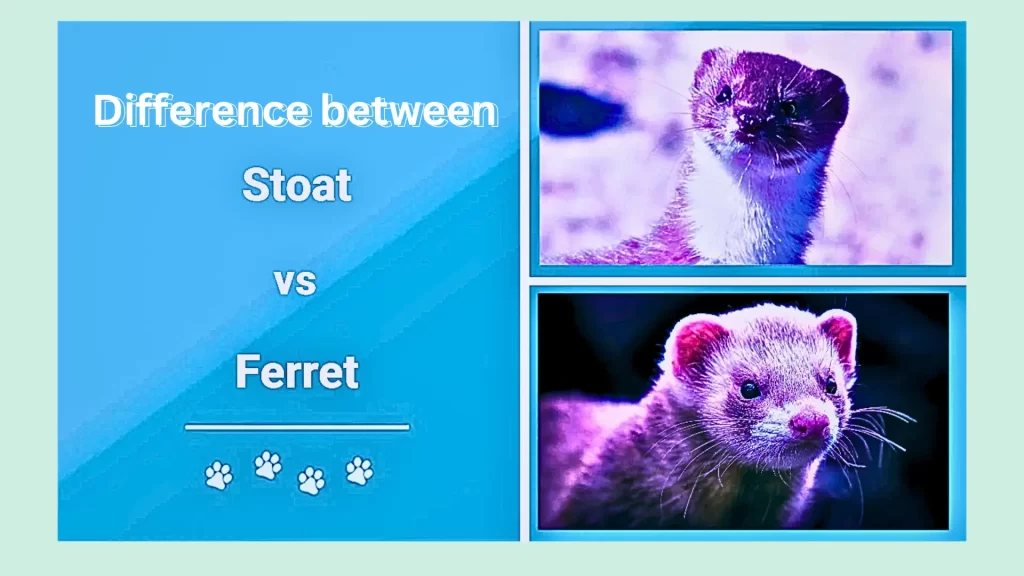
Though they share many characteristics in common, stoats (Mustela Erminea) and ferrets (Mustela putorius furo) do differ significantly – here are just a few key distinctions between them:
- Size: Stoats are generally larger than ferrets. Adult stoats generally measure 12-18 inches (30 to 45 centimeters). Their tail can add another 4-6 inches (10-15 centimeters). Ferrets are typically smaller, measuring around 20 inches (51 cm) in length, including the tail.
- Coloration: Stoats exhibit a seasonal color change. In the summer, they have a brown coat with a creamy white belly, while in winter, their fur turns white, except for the black tip on their tail. Ferrets come with different coat colors like cinnamon, albino, sable and silver to give your pet that added personality.
- Domestication: Ferrets have an ancient domestication history spanning hundreds of thousands of years of selective breeding for desired characteristics. They are widely kept as pets and have been selectively bred for various coat colors, sizes and temperaments. Stoats are primarily wild animals and have not been extensively domesticated.
- Behavior and Temperament: Stoats are primarily solitary animals, whereas ferrets are highly social creatures. Ferrets enjoy interacting with humans and other ferrets, and they require socialization and mental stimulation for their well-being. Stoats, being solitary hunters, have less social interaction and are less inclined towards human companionship.
- Natural Habitat: Stoats are adapted to various natural habitats, including forests, grasslands and tundra regions. They are well-suited to cold environments and can be found in regions with harsh winters. Ferrets are domesticated animals and no longer have a natural habitat. They are adapted to living in human dwellings or controlled environments.
- Reproduction: Stoats are seasonal breeders, mating during the summer months. Female stoats give birth to litters of kits after a gestation period of around 280 to 340 days. Ferrets can breed throughout the year, although their reproductive activity may be influenced by environmental factors. Female ferrets have a reproductive cycle called estrus or heat, during which they are receptive to mating.
- Use by Humans: Stoats have been historically hunted for their fur, particularly the white winter fur known as ermine. They have also been used for pest control in some regions. Ferrets have a wide range of uses by humans. They are kept as pets, employed for hunting small game, used for pest control in agricultural settings and even used in scientific research.
These differences highlight the distinct characteristics, behaviors and roles of stoats and ferrets in their respective ecosystems and human interactions.
Similarities of Stoat and Ferret
Stoats (Mustela erminea) and ferrets (Mustela putorius furo) share several similarities due to their close evolutionary relationship as members of the Mustelidae family.
Here are some of the similarities between stoats and ferrets:
- Taxonomy: Both stoats and ferrets belong to the same genus Mustela, which includes several species of weasels and related mammals.
Body Shape and Size: Stoats and ferrets have a similar elongated body shape with a slender build. They both have short legs, sharp claws, and a long, flexible torso. - Carnivorous Diet: Both stoats and ferrets are carnivores and have similar dietary requirements. Feed on small mammals, birds and insects as well as reptiles and amphibians for sustenance.
- Hunting Skills: Stoats and ferrets are skilled hunters with sharp teeth and strong jaws. They use their agility and speed to pursue and capture prey, employing stalking and pouncing techniques.
- Adaptability: Both stoats and ferrets are adaptable animals that can thrive in various environments. While stoats are more closely associated with natural habitats, ferrets have been domesticated and can adjust to living with humans.
- Burrowing Behavior: Stoats and ferrets share a tendency to burrow and inhabit underground dens or tunnels. They use these structures for shelter, nesting and raising their young.
- Agile Movements: Stoats and ferrets exhibit similar agile movements, capable of climbing trees, swimming, and navigating through tight spaces. Their flexible bodies and strong limbs enable them to maneuver in different environments.
- Playful Nature: Both stoats and ferrets are known for their playful behavior. They engage in activities like chasing, wrestling, and exploring their surroundings, exhibiting curiosity and energy.
- Seasonal Color Changes: Stoats and ferrets undergo seasonal color changes. In regions with cold winters, both species develop a white winter coat to blend with the snowy surroundings. During the warmer seasons, their fur changes to a brown or tan color.
- Scent Marking: Stoats and ferrets both use scent marking as a form of communication and territory marking. They have scent glands that produce musky secretions used to communicate with other individuals.
While stoats and ferrets have these similarities, it’s important to note that ferrets are domesticated animals and have undergone selective breeding, resulting in distinct characteristics and behaviors specific to their domesticated lineage.
Conservation Status and Threats
Conservation Status and Threats of Stoats:
Stoats (Mustela Erminea) have been classified by the International Union for Conservation of Nature as “Least Concern,” meaning their population has been stable and there are no major threats to their conservation globally. Conservation status can differ within specific locations or local populations – here are some key facts about their conservation status as well as potential threats they face:
- Population and Range: Stoats have a widespread distribution across Europe, Asia and North America. Animals like squirrels are fearsome creatures found throughout a wide array of environments such as forests, tundra, grasslands and agricultural zones.
- Predatory Impact: Stoats are skilled hunters and have a significant impact on prey populations. While they play a natural ecological role as predators, their presence can affect the abundance and distribution of their prey species, potentially influencing ecosystem dynamics.
- Habitat Loss and Fragmentation: Habitat fragmentation and loss caused by human activities like urbanization, deforestation and agricultural production could significantly diminish stoat populations. Reduction or degradation of suitable habitat can limit their access to prey and shelter.
- Climate Change: Climate change can have both direct and indirect effects on stoat populations. It can alter their habitat by affecting temperature, precipitation patterns and vegetation dynamics. Climate change can also impact prey availability, potentially affecting the stoats’ food sources.
- Invasive Species: In some regions, stoats face competition and predation pressure from invasive species, particularly when introduced to island ecosystems. Invasive predators, such as rats or cats, can negatively impact stoat populations by competing for resources or preying upon stoat kits.
- Disease and Parasites: Stoats can be susceptible to various diseases and parasites, including those transmitted by other animals or through environmental factors. Outbreaks of diseases can impact stoat populations, especially in areas with high population densities.
It is important to note that while stoats are not currently considered globally threatened, localized declines or regional extinctions may occur in certain areas due to specific threats or localized disturbances. Conservation efforts focus on maintaining suitable habitats, managing invasive species, monitoring population trends, and studying the ecological dynamics of stoats and their interactions with other species.
Conservation Status and Threats of Ferrets:
As domesticated animals, ferrets (Mustela putorius furo) do not have a specific conservation status assessed by the IUCN Red List. Wild populations of European polecats (Mustela putorius), which are the wild ancestors of ferrets, face some conservation concerns. Here are the key points regarding the conservation status and threats to wild polecat populations:
- Range and Population: European polecats have a wide distribution across Europe. While their populations are generally stable, localized declines have occurred in some regions, mainly due to habitat loss, fragmentation and persecution.
- Hybridization with Ferrets: One of the main conservation concerns for European polecats is hybridization with domesticated ferrets. Escaped or released ferrets can interbreed with wild polecats, leading to genetic dilution and potential loss of pure polecat populations.
- Habitat Loss and Fragmentation: Loss and degradation of suitable habitat due to agricultural expansion, urbanization and infrastructure development can negatively impact polecat populations. Fragmentation of habitats can isolate populations and limit their genetic connectivity.
- Persecution and Human Conflict: European polecats have historically faced persecution due to misconceptions, as they were often mistaken for pests or competitors for game species. This persecution, including trapping and hunting, can pose a threat to their populations.
- Road Mortality: Like many other wildlife species, European polecats are vulnerable to road mortality. Increased road networks and vehicle collisions can lead to direct mortality and population fragmentation.
Conservation efforts for European polecats primarily focus on habitat conservation, raising awareness about their ecological importance and implementing measures to mitigate hybridization with ferrets. Additionally, research and monitoring programs are important for understanding their population dynamics and implementing effective conservation strategies.
Summary
Stoats and Ferrets are captivating creatures that have intrigued humans for centuries. From their agile hunting techniques to their distinctive physical characteristics, these small carnivores hold a special place in the natural world. While stoats thrive in various habitats across the globe, ferrets have found a special niche as cherished pets in households worldwide.
Understanding and appreciating the uniqueness of these animals can lead to better conservation efforts and an enriched understanding of the diverse species that share our planet.

